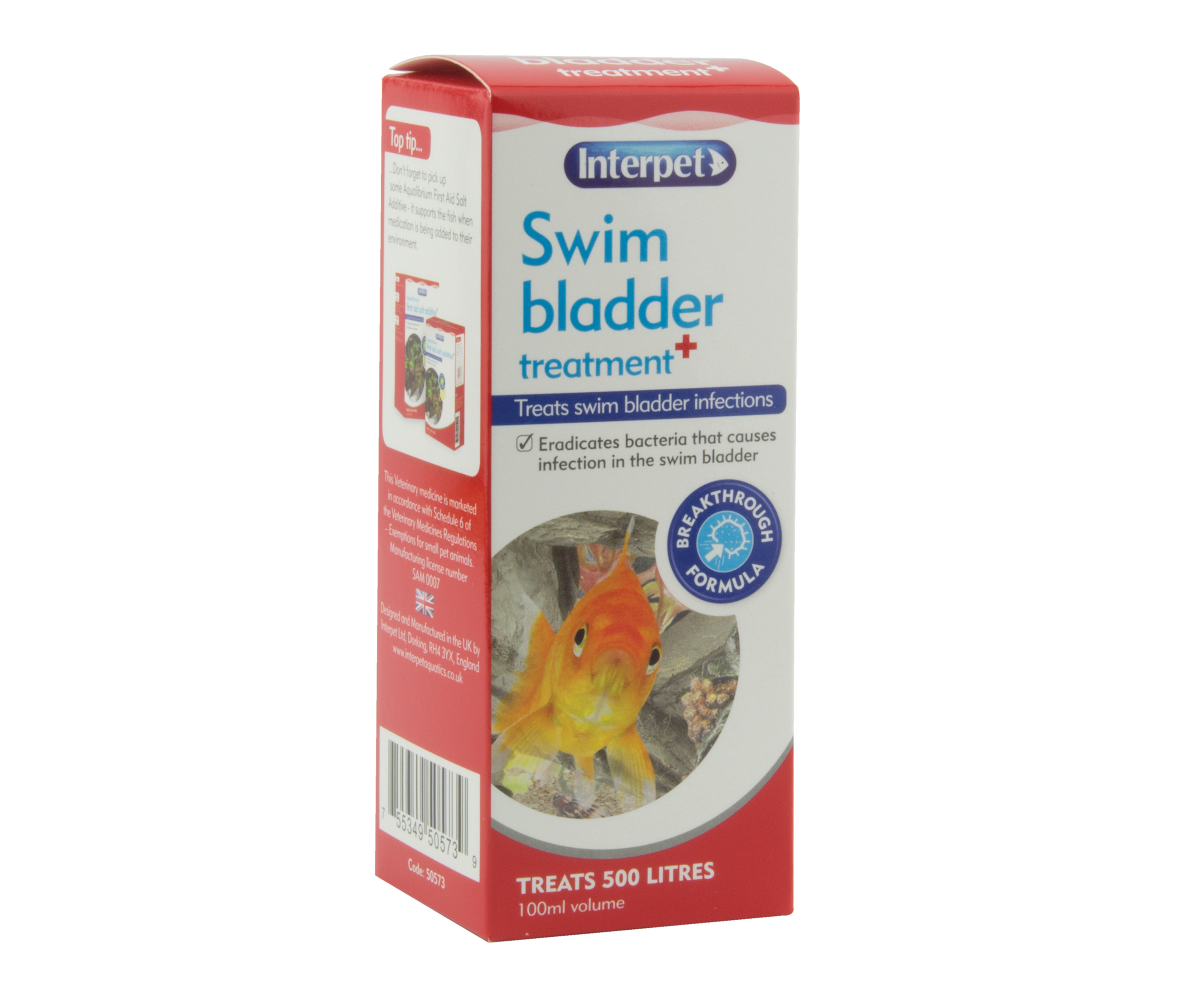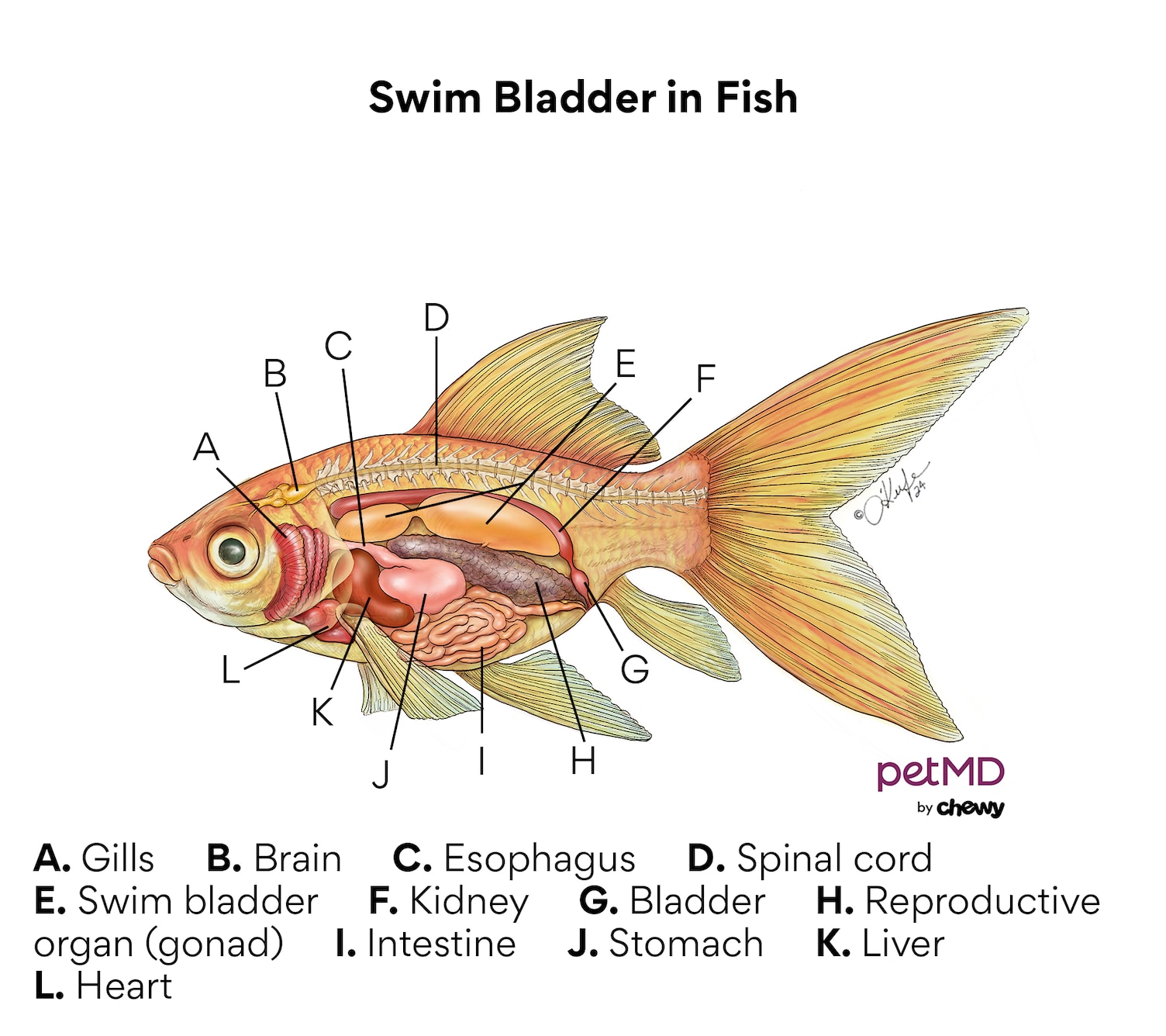To fix swim bladder issues in goldfish, fast the fish for 24-48 hours and then feed them peas. Ensure clean, warm water.
Swim bladder disorder affects a fish’s buoyancy. Goldfish often suffer from this condition, causing them to float or sink uncontrollably. Overfeeding and poor water quality are common causes. Start by fasting your goldfish for 24-48 hours. This helps clear their digestive system.
After the fast, feed them deshelled, cooked peas. Peas act as a natural laxative, aiding digestion. Ensure the tank water is clean and at the right temperature. Regular maintenance and a balanced diet can prevent future issues. Observing your goldfish closely will help you catch problems early, ensuring a healthy aquatic environment.
Introduction To Swim Bladder Issues In Goldfish
Swim bladder issues can trouble goldfish. The swim bladder helps fish float. When it malfunctions, fish struggle to swim right. This disorder can be alarming for pet owners.
Understanding swim bladder disorder is key. Knowing symptoms and causes helps in providing the right treatment. This ensures a healthier life for your goldfish.
Identifying Swim Bladder Disorder Symptoms
Recognizing symptoms early is crucial. Here are common signs to look for:
- Floating Upside Down: Goldfish may float belly-up.
- Sinking to the Bottom: Fish might struggle to stay afloat.
- Tilting to One Side: Fish swim at odd angles.
- Difficulty Swimming: Fish find it hard to control movements.
Common Causes Of Swim Bladder Problems
Swim bladder issues can arise from various factors. Below are some common causes:
| Cause | Description |
|---|---|
| Overfeeding | Too much food can cause bloating. |
| Constipation | Blocked intestines affect the swim bladder. |
| Infections | Bacterial infections can affect swim bladder function. |
| Poor Water Quality | Dirty water stresses fish and causes issues. |

Credit: pondaquariumproblemsolver.co.uk
Immediate Actions To Take
Goldfish can suffer from swim bladder problems. It’s important to know what to do. Here are some immediate actions to take if your goldfish shows signs of swim bladder issues.
Isolating The Affected Fish
The first step is to isolate the affected fish. This helps to reduce stress and prevent further injury. Use a separate tank or a quarantine box. Ensure the tank or box has the same water conditions as the main tank.
- Prepare a separate tank.
- Match the water conditions to the main tank.
- Gently move the affected fish.
Water Quality Checks And Adjustments
Good water quality is crucial for your goldfish’s recovery. Perform water tests to check for ammonia, nitrites, and nitrates. Make sure the pH levels are safe.
| Parameter | Safe Range |
|---|---|
| Ammonia | 0 ppm |
| Nitrites | 0 ppm |
| Nitrates | 0-20 ppm |
| pH | 6.5-7.5 |
If any parameters are out of range, take action. Do a partial water change. Use water conditioners to remove harmful chemicals. Ensure the water temperature is stable.
- Test the water parameters.
- Change part of the water if needed.
- Use water conditioners.
- Check and stabilize the water temperature.
By isolating the affected fish and checking water quality, you can help your goldfish recover quickly.
Dietary Adjustments For Recovery
Dietary adjustments play a crucial role in helping goldfish recover from swim bladder issues. The right foods can make a significant difference in their health. This section provides essential tips on which foods to avoid and which to include in their diet.
Foods To Avoid
Some foods can worsen swim bladder problems. It’s essential to avoid these:
- Dry Flake Foods – These can expand in the stomach.
- Pellets – Dry pellets may cause bloating.
- Frozen Foods – These can be too cold for digestion.
- High-Fat Foods – Such as meat, which is hard to digest.
Recommended Foods For Healing
Certain foods can help improve swim bladder function. Consider these options:
- Peas – High in fiber, helps digestion.
- Blanched Spinach – Easy to digest and nutritious.
- Boiled Vegetables – Soft and gentle on the stomach.
- Daphnia – Natural and easy to digest.
- Bloodworms – Rich in nutrients and easy to eat.
| Food Type | Reason to Include/Avoid |
|---|---|
| Peas | High in fiber, helps digestion. |
| Dry Flake Foods | Can expand in the stomach. |
| Blanched Spinach | Easy to digest and nutritious. |
| Pellets | May cause bloating. |
| Daphnia | Natural and easy to digest. |

Credit: www.petmd.com
Environmental Modifications
Goldfish with swim bladder issues need a proper environment for recovery. Simple changes can make a big difference. Below, we discuss important environmental modifications.
Optimizing Tank Conditions
Maintaining optimal tank conditions is crucial for goldfish health. Keep the water clean and free of toxins.
- Use a good filtration system to keep the water clear.
- Regularly check water parameters like pH, ammonia, and nitrate levels.
- Perform weekly water changes of about 25% to 30% of the tank volume.
Goldfish thrive in stable temperatures. Ensure the water temperature stays between 68°F and 74°F (20°C to 23°C). Use a reliable aquarium heater to maintain this range.
The Role Of Tank Decorations And Plants
Tank decorations and plants play a key role in goldfish health. They provide hiding spots and reduce stress.
- Use smooth, rounded decorations to prevent injuries.
- Avoid sharp or rough items that can harm your goldfish.
- Live plants improve water quality and offer natural hiding spots.
Create a balanced environment with both open swimming spaces and sheltered areas. This helps your goldfish feel safe and secure.
Consider adding floating plants. They help diffuse light and create a calming environment.
| Decorations | Benefits |
|---|---|
| Live Plants | Improve water quality, reduce stress |
| Smooth Rocks | Provide hiding spots, prevent injuries |
| Floating Plants | Diffuse light, create a calming environment |
By optimizing tank conditions and carefully selecting decorations, your goldfish has a better chance of recovering from swim bladder issues.
Medication And Treatment Options
Swim bladder disorder can affect your goldfish’s ability to swim properly. This issue often requires specific medication and treatments to resolve. Understanding the options available can help you make the right decision for your pet’s health.
Over-the-counter Remedies
Several over-the-counter remedies can help treat swim bladder disorder in goldfish. These medications are easy to find and use. Here are some popular choices:
- Melafix: A natural antibacterial remedy that treats infections.
- Pimafix: Another natural remedy, effective against fungal infections.
- Swim Bladder Treatment: Specialized solutions targeting swim bladder issues.
Always follow the instructions on the packaging. It’s important to use the correct dosage to ensure effectiveness. Also, keep an eye on your goldfish for any side effects.
When To Consult A Veterinarian
Sometimes, over-the-counter remedies might not be enough. If your goldfish’s condition does not improve, it may be time to consult a veterinarian. Here are some signs that indicate a need for professional help:
- Your goldfish is not responding to treatments.
- There are signs of severe distress or pain.
- The condition has worsened over time.
Veterinarians can offer advanced treatments and medications. They can also provide a more accurate diagnosis. This ensures that your goldfish receives the best possible care.
In some cases, a veterinarian might perform surgery. This is often a last resort but can be necessary for severe cases. Regular check-ups can help prevent swim bladder issues from becoming serious.

Credit: www.wikihow.com
Long-term Care And Prevention
Ensuring the long-term health of your goldfish involves more than just immediate treatment. Proper long-term care and prevention are crucial for avoiding future swim bladder issues. By following these guidelines, you can help your goldfish live a happier, healthier life.
Regular Maintenance Routines
Keeping your goldfish healthy starts with regular tank maintenance. Clean the tank at least once a week. Replace 25% of the water during each cleaning session. Use a gravel vacuum to remove waste and uneaten food from the tank floor. Ensure the water temperature stays between 68°F and 74°F. Use a reliable aquarium thermometer for accurate readings. Check the water’s pH level; it should be between 7.0 and 8.4.
Preventive Measures To Avoid Recurrence
Preventing swim bladder issues requires attention to diet and environment. Feed your goldfish high-quality food in small amounts twice a day. Avoid overfeeding to prevent digestive problems. Soak dry food before feeding to reduce the risk of it expanding in the stomach. Include live or frozen foods like brine shrimp and bloodworms in their diet.
Maintain a stress-free environment for your goldfish. Avoid sudden changes in water temperature. Keep the tank in a quiet area away from loud noises and vibrations. Provide hiding spots using plants and decorations to make your goldfish feel secure.
| Preventive Measure | Reason |
|---|---|
| Feed Small Amounts Twice Daily | Prevents Overfeeding |
| Soak Dry Food | Reduces Risk of Expansion in Stomach |
| Include Live or Frozen Foods | Improves Nutrition |
| Maintain Stable Water Temperature | Reduces Stress |
| Provide Hiding Spots | Increases Security |
By following these preventive measures, you can significantly reduce the risk of swim bladder issues in your goldfish.
Alternative Remedies And Supportive Care
Goldfish with swim bladder issues need specific care. Alternative remedies and supportive care can help. This section covers natural treatments and stress reduction.
Natural Treatments To Consider
Several natural treatments can aid goldfish with swim bladder problems. These treatments are easy to follow and gentle for your fish.
- Peas: Peas can help with digestion. Remove the skin and cut them into small pieces. Feed your goldfish these peas once a day.
- Fasting: Fasting helps clear the digestive system. Avoid feeding your fish for two to three days. This gives the swim bladder time to heal.
- Daphnia: Daphnia is a natural laxative. It helps with digestion and relieves constipation.
The Importance Of Stress Reduction
Reducing stress is crucial for goldfish recovery. Stress can worsen swim bladder issues.
- Proper Tank Conditions: Ensure the tank is clean. Check the water temperature and pH levels regularly.
- Tank Mates: Avoid aggressive tank mates. They can stress your goldfish.
- Quiet Environment: Keep the tank in a quiet place. Loud noises can scare your fish.
Supporting your goldfish with the right care can make a big difference. Follow these tips to help your fish recover.
Understanding The Prognosis
Understanding the prognosis of swim bladder disease in goldfish is crucial. This helps in setting realistic expectations for recovery. Swim bladder disease affects buoyancy, causing the fish to swim abnormally. The prognosis depends on various factors, including the severity of the condition and the timeliness of the treatment.
Factors Influencing Recovery
- Severity of the Condition: Mild cases have a better chance of recovery.
- Timeliness of Treatment: Early intervention improves the prognosis.
- Underlying Causes: Addressing the root cause is essential.
- Fish’s Age and Health: Younger and healthier fish recover faster.
- Diet and Environment: Proper diet and clean water are vital.
Monitoring Progress And Health
Regularly monitor your goldfish’s condition and behavior. Keep a close eye on their swimming patterns and appetite. Record any changes in a log for better tracking.
| Parameter | Healthy Sign | Concern Sign |
|---|---|---|
| Swimming Pattern | Normal, balanced swimming | Floating or sinking |
| Appetite | Eating regularly | Loss of appetite |
| Appearance | Bright, vibrant colors | Pale or discolored |
Use these observations to adjust the treatment plan. Seek professional advice if no improvement is seen within a few weeks. Consistent monitoring ensures the best chance of recovery for your goldfish.
Conclusion
Fixing swim bladder in goldfish requires patience and proper care. Follow the steps discussed to ensure your fish recovers. Regular tank maintenance and a balanced diet can prevent future issues. Keep an eye on your goldfish’s behavior to catch any symptoms early.
Your goldfish will thank you with a healthy, happy life.
